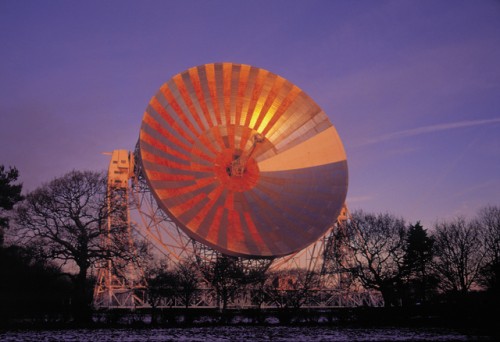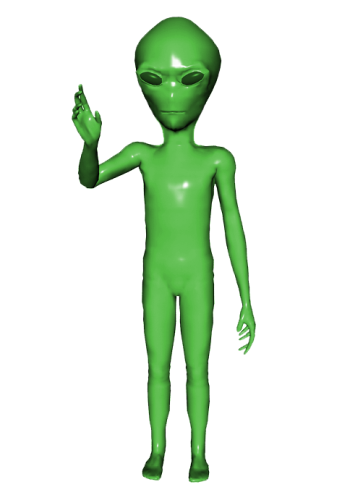Tag archives: aliens
Primates and paradoxical twins in the ISS, cosmic musicals, alien advertising and more
By Tushna Commissariat
The International Space Station (ISS) usually has only the human variety of primate on board, but earlier this week a gorilla seemed to have joined the crew. If you thought that this was part of one of the hundreds of planned experiments on the ISS you would be wrong. Instead, it was crew member Scott Kelly’s birthday hijinks after his twin brother sent him the suit for his birthday as the astronaut celebrated a year in space. Kelly will return to Earth in six days’ time.
Interestingly, this is the first time NASA has sent up one half of a pair of twins into space and is studying just how life on the ISS will change Scott’s physiology from that of his twin Mark. Apart from looking at how life in space will alter everything from Scott’s DNA to his gut microbes, this is also a real-life variation of the “twin paradox” experiment where Scott will return to the planet a bit “younger” than his twin in that Scott’s clock runs a bit slower than Mark’s, thanks to the ISS’s orbital speed of 17,000 mph. After reading this, if you feel like you would like a go on the ISS, NASA is currently hiring.
View all posts by this author | View this author's profile
Lectures with Peter Higgs, award-winning photographs, multidimentional shapes and more
By Tushna Commissariat
Each week, all of us here at Physics World comb the Internet for all things physics – we look at national and local newspapers, university news outlets, a variety of magazines, science websites and blogs, and, of course, all the latest scientific papers. We then pool our research and pick the cream of our crop to report on. But we can’t always cover all the interesting bits of physics news that we have chanced upon and a lot of good stuff is left behind in a red folder. So, starting from today, at the end of each week we’ve decided to point all of you, our eager readers, to the stories that have caught our fancy but not made it to the site yet and leave you with some extra weekend reading from The Red Folder.
Extending the ‘Goldilocks’ zone

A comparison of the inner planets of our solar system, within the habitable zone, to Kepler-62 – a five-planet system about 1200 light-years from Earth. (Courtesy: NASA/Ames/JPL-Caltech)
By Ian Randall
In the modish hunt for exoplanets, the holy grail is discovering such a body within the habitable zone of a star – offering a tantalizing potential for extraterrestrial life. If our solar system is anything to go by, we can expect most planets to form outside of the confines of this zone. What if, however, the habitable zone is really larger than we thought?
This is the idea put forward by Sean McMahon from the University of Aberdeen, Scotland, and colleagues in a recent paper – proposing that the existing definition of the habitable zone overlooks the potential for life to survive below the surface of terrestrial planets that currently lie outside the zone’s reach.
View all posts by this author | View this author's profile
Should governments provide funds for the search for extraterrestrial intelligence?

The Lovell Telescope was used during the SETI Institute’s Project Phoenix.
(Courtesy: Jodrell Bank Centre for Astrophysics, University of Manchester)
By James Dacey
Are we alone in the universe? It’s the age-old question that took on a whole new significance once we had built the tools to transmit and receive radio waves across interstellar distances. With the advent of radio telescopes, we had finally acquired the faculties to listen for the signs of an alien race trying to make contact. The search for extraterrestrial intelligence – better known as SETI – took a giant leap forwards in 1984, when the SETI Institute was founded in California. This institute is the nerve centre of SETI activities and it is funded almost entirely from private sources.
But while SETI activities have been strongly associated with the US, the movement has been international since its outset. Here in the UK, perhaps the most significant contribution has probably been the country’s involvement in Project Phoenix, which between 1998 and 2003 used the 76 m Lovell Telescope (pictured above) at Jodrell Bank Observatory near Manchester.
It seems that the desire among British scientists to search for aliens is still alive and well, as a bunch of academics has recently set up the UK SETI Research Network. The group held its first formal activity last Friday (5 July), during three SETI sessions at this year’s National Astronomy Meeting (NAM2013) at the University of St Andrews in Scotland.
View all posts by this author | View this author's profile
Of mice and ‘little green men’
By Tushna Commissariat

Just called to say hello?
(Wikimedia Commons/Crobard)
There’s nothing quite like mentioning extraterrestrials or aliens to get us “Earthlings” all excited or riled up! Late last week, a paper popped up on arXiv, by astronomer Alan Penny from the University of St Andrews. He outlines an incident where, for a short while, the possibility of alien contact was seriously considered. He was talking about what was ultimately the discovery of the first pulsar; but at the time the researchers couldn’t help but wonder if they had come across the first “artificial signal” from outer space.
The exciting happenings began in August 1967, when Jocelyn Bell Burnell (then a graduate student working with Antony Hewish – controversially, only Hewish won the Nobel prize for the pulsar discovery in 1974) at the University of Cambridge, noticed a particular source that had a “flickering pattern” that, over a few weeks, she realized showed up regularly each day at the same sidereal time. That December Bell pinpointed the specific position of the source in the sky using another telescope and the discovery was confirmed. In the coming months, three more similar patterns were found and the researchers agreed on “pulsating stars” or pulsars being the source. But during those winter months, the possibility that they had encountered the first alien signal loomed large. In fact, Brunell and colleagues dubbed the first pulsar LGM-1 or “Little Green Men”; although it was changed to CP 1919, and is now known as PSR B1919+21.
View all posts by this author | View this author's profile
